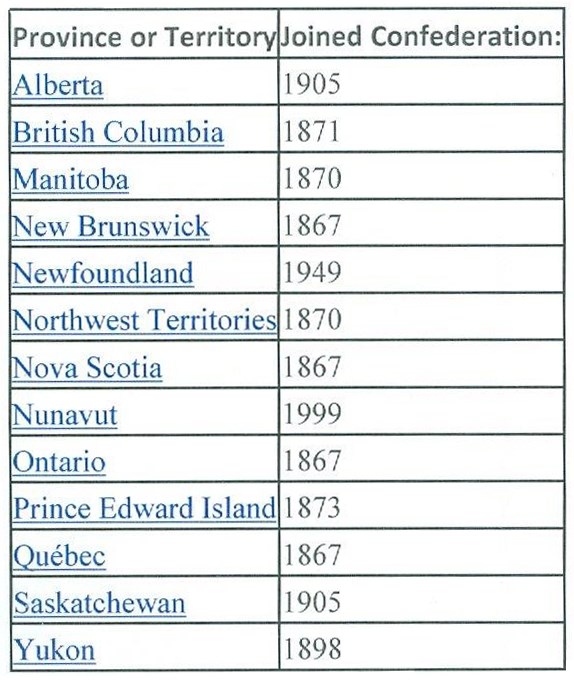Prince Edward Island has been taking credit for having been the “cradle of Confederation” although the Island did not join Confederation until 1873. Yet, CANADA-- the main British Colony/Province which had been partitioned off as Upper Canada (Ontario) and Lower Canada (Québec) in 1791, had been talking for years of a federation of all colonies of British North America or as some maps have it as the British Possessions. The main ideal was to create a strong federal government to deal with problems and solutions relevant to the welfare of all colonies and create provinces with powers to solve the affairs more specific to each. It so happens that in 1864, Prince Edward Island, Nova Scotia and New Brunswick decided to hold their own conference with a view of a Maritime union. As soon as officials of Lower and Upper Canada got wind of its planning they invited themselves to Charlottetown. They boarded a new steamer and sailed up the St. Lawrence River, lounging under a large awning on deck, sipping champagne, with their gourmet meals while they talked politics. When they arrived at their destination, they learned of a big circus in town, and accommodations were scarce, however they had the steamer accommodation to go back to. The conference went well, and all agreed to meet at Québec City in October 1864. This conference was well attended and it was decided to have another Conference in London England in 1866. At the London meeting, they agreed that the new federation would consist of New Brunswick, Nova Scotia, and carved out of Canada two provinces renamed Québec and Ontario would now be the new union called the Dominion of Canada. They continued to court the reluctant colonies of the remainder of the British Possessions. British Columbia demanded an intercontinental railway (the CPR) and P.E.I. joined after accepting federal monies to help with their enterprises. There were no Indigenous representatives at any of these conferences, however the British North America Act of 1867 transferred the responsibility for Canada’s First Nations from Britain to the new Canadian government. Some “Country” defining events took too long: these were: Our own Canadian Citizenship Act of 1946-47, at which time we finally had Canadian citizenship, as we were British Subjects until then. Then we finally had our own Canadian flag in 1965, and the repatriation of our Constitution in 1982. We live in a great country — O Canada, notre pays, nos amours! O Canada, our country, our love!
Contact Terri Lefebvre Prince,
Heritage Researcher,
City of Yorkton Archives,
Box 400, 37 Third Avenue North
Yorkton, Sask. S3N 2W3
306-786-1722
[email protected]




